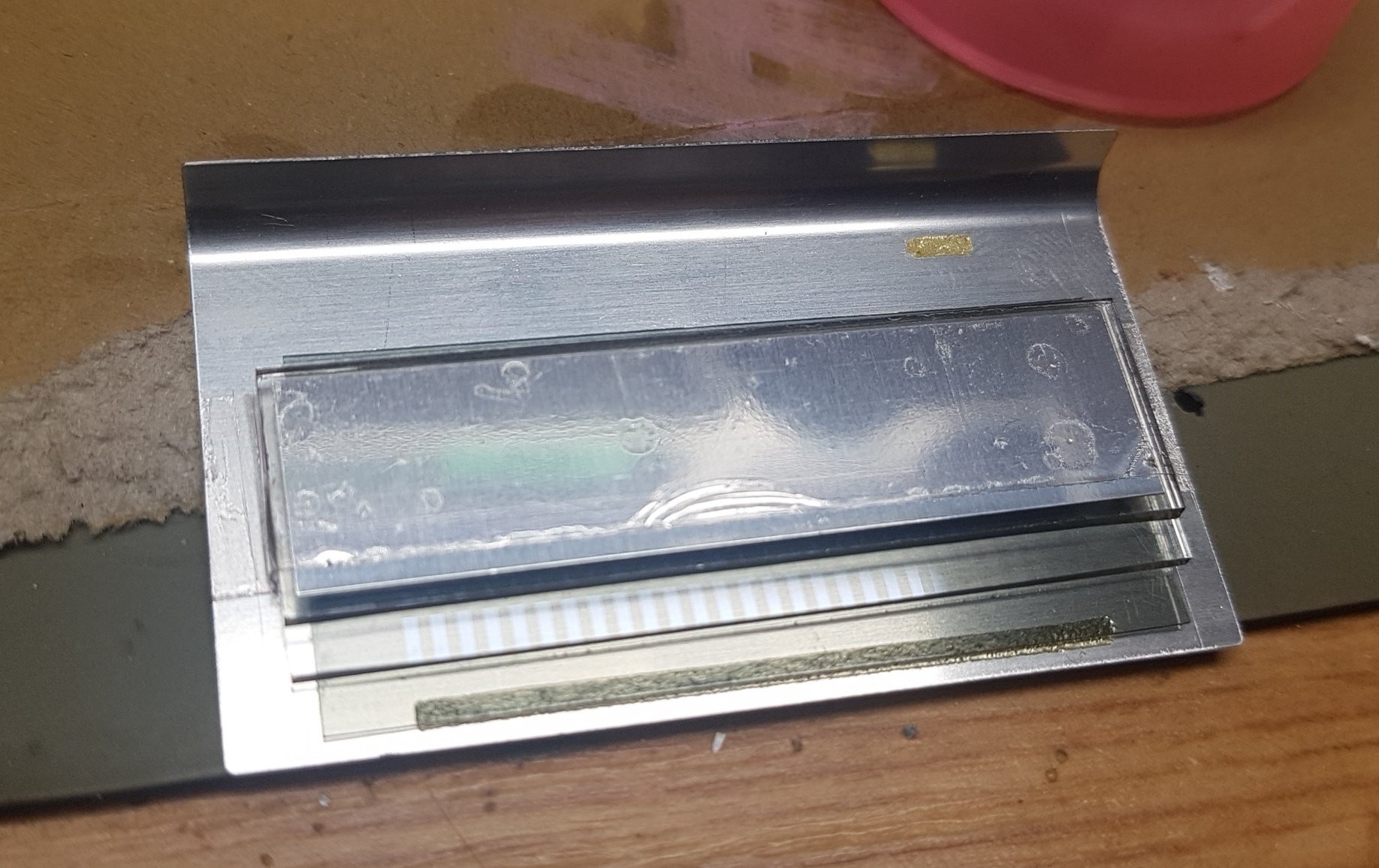This is a super clickbaity title, since I don't have anything to show yet. But I will set my case of why I think it's doable. First off something weird that you might miss when taking it apart: the black cover has a polarising filter glued to it, which you need to see any change on the LCD. The cable that is connecting the PCB and the LCD will most likely not stick to your LCD anymore. In the picture below you can see the shadow thrown by the sticky glue that was supposed to hold the cable to the contacts on the LCD between the glue. There's a frame holding the display in place.

With a bit of help by WD-40 you can sulk the glue and later remove the residue with a q-tip. The WD-40 needs to be removed as well, best to use some alcohol I guess. In the picture below you can see the pads on glass very nicely. Now you can't solder to these pads, but you might know that zebra silicone strips exist, that only conduct in one direction.

Down below you can see a piece of the cable that I've cut with some scissors. It has 29 tracks / wires and the display is grouped in segment triplets - so there are 3 x 26 = 78 segments on that LCD.
- 8x 7-segments
- 8x '#' = 64
- 8x decimal point
- 5x calculator related segments
- beat indicator
Since these pins are also on any other Keyboard and there's a segment that blinks in the speed of the rhythm, this is of interest to people that want to modify their D1867G based keyboard.

I've ordered five zebra strip with the length of 5cm for less than 10 Euros. With the right size, the help of some 3D printing and a small PCB design this should be fixable. PCB is designed and ordered.


 davedarko
davedarko
Discussions
Become a Hackaday.io Member
Create an account to leave a comment. Already have an account? Log In.
Great post. You inspired me to repair my Casio VL-1. Read about it here: https://hackaday.io/project/192878-casio-vl-1-display-repair/log/223363-casio-vl-1-lcd-repair-log
Are you sure? yes | no
Where did you order the ribbon cable for your casio lcd?
Are you sure? yes | no